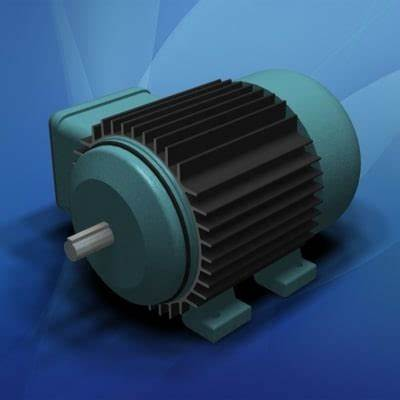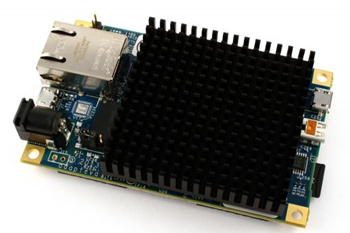What is fin in heat transfer?
Fin is an extended area used to increase the rate of convective heat transfer. The wings have been shown solely to give a sense of proportion.
As with the flexible heat transfer formula, the heat transfer rate is directly proportional to the area specified in the convective medium.
Thus, the wings help to expand the surface area in the surrounding area. First, heat is transferred from the body to the wings by means of a circular motion, and then the heat from the wings is transferred away by convection.
Properties of fins:
The material for fins are selected on the basis of the
following properties: -
1) High thermal conductivity
2) Light weight
3) Castability
4) Corrosion-resistant
Types of fins:
Based on the operating condition and area available the fins
are classified as,
1) Straight fins: The straight fins are generally arranged
normally to the surface of the body and in parallel directions.
Based on the cross-section, the straight fins are further
classified as,
A) Rectangular profile straight fin
B) Trapezoidal profile straight fin
C) Concave profile straight fin
2) Radial fin: Radial fins are fitted on the cylindrical
surface as shown in the figure. Based on the cross-section, these fins are also
classified as,
A) Rectangular profile
B) Trapezoidal profile
3) Annular fin: The annular fins are of annular shape fixed
on the periphery of the cylindrical body.
It is also classified on the basis of cross-section used for
fins as follows,
A) Trapezoidal profile annual fin
B) Rectangular profile annual fin
C) Concave profile annular fin
4) Pin fin: The pin fins have a lower cross-section area but, in this case, the surface area exposed to the convection is more.
Advantages of fins:
- The fins have the following advantages:-
- Increase in the rate of heat transfer
- Easy and cheap way for cooling of equipment
- It is not necessary to increase the convective heat transfer coefficient by using different cooling mediums.
Disadvantages of fins:
- The weight of the body increases due to the fins.
Application of fins:
Based on the purpose of fins, to increase the rate of
convective heat transfer, the fins are used in the following applications: -
- Radiator used in automobile
- On engine surface in bikes
- Compressors
- Condensers of refrigerator or AC
- On electric transformers
- On electric motor
- In other electric and electronic components
Fig. Fins used in
electric motor
Fig. Fins used in
compressor
Fig. fins used in
radiators
Selecting the best type of heat sink for your application
The need for heat sinks with increased cooling capacity has
been driven by the ever-increasing heat generation of electronic devices. This
has led to the increased manufacture of pin fin heat sinks as shown in figure 1
that vendors claim has vastly superior performance to the traditional plate fin
heat sink with continuous parallel fins as shown in figure 2. Is this claim
true? Like most engineering answers….it depends.
Figure Pin fin
heat sink
The goal of a heat sink is to efficiently remove heat from the
source(s) it is attached to so as to minimize the temperature of that
source(s). The performance of the heat sink is governed by this simple heat
transfer equation:
Any heat sink with a larger value of h x A will be
able to produce a lower source temperature.
A plate fin would almost always for most practical
heat sinks have a larger surface area than a pin heat sink that has the same
over all dimensions. Only for very closely spaced pin fin heat sinks does
the pin fin surface area exceed that of the plate fin heat sink. Don’t believe
me? Let’s do the math. Figure 3 shows the dimensions for a pin fin and plate
fin heat sinks with the same external dimensions. To make the math easier a
heat sink with a square base will be used for the comparison. The equations for
the surface areas of the heat sinks are as follows:
Nplate is the number of plate fins and Npin is
the number of pin fin along each edge.
The graph in figure 4 shows a plot of the spacing
between the fins s versus the surface areas of plate fin and pin fin heat sinks
with the following dimensions.
Figure Comparison of the variation of surface
area of a pin fin and plate fin heat sink with fin spacing
Only at a fin
spacing of approximately 3mm does the Ahs of
the pin fin heat sink begin to exceed that of the plate fin heat sink. This fin
spacing is quite small for most heat sinks.
If pin fin heat
sinks are to out perform plate fin heat sinks then its convection coefficient,
h must be sufficiently large to compensate for the lower surface area. The
growth of the thermal boundary layer along the direction of air flow is limited
by the discontinuous surface formed by the pin fins. As air flows past the fins
a thermal boundary layer builds along the surface of the pin. Once the flow of
air has reached the gap between pin fins the thermal boundary layer is totally
or partially destroyed and reformed when it encounters the next pin fin along
the flow path. This destruction of the boundary layer can result in better heat
transfer. (Refer to the article Top 3 mistakes made when
selecting a heat sink point number 2: “Selecting a heat sink
based solely on surface area” for a more detail explanation of the thermal
boundary layer. )
The discontinuous geometry of a pin fin heat sink
also increases the pressure drop across the heat sink. This increased pressure
drop then results in a reduced flow rate particularly in natural convection and
in some fan cooled applications where the fan is not directly attached to the
heat sink and flow bypass may occur.
There have been a few studies comparing the performance
of plate and pin fin heat sinks in natural convection[1], [2]. The results show
that for optimized plate and pin fin heat sinks that have the same external
dimensions plate fin heat sinks have superior performance in most situations.
Pin fin heat sinks are advantageous over plate fin heat sinks in situations
where the heat sink may be oriented in multiple orientations. The performance
of the pin fin heat sink does not vary significantly in different orientations.
Plate fin heat sinks perform poorly when the fins
are oriented perpendicular to the direction of air flow. If the installation of
the heat sink is limited to 90° increments then orienting the fins at 45° as
shown in figure 5 would create a design that has good performance in all
orientations. Note that the performance of a heat sink with
45° angled fins with a length to width ratio of 1.5 is superior to a heat
sink with with vertical fins. This is because the cooled ambient air can enter
the channels formed by the 45° angled fins along the entire length of the heat
sink. The performance of 45° angled fin heat sinks with a length to width ratio
below 1 tend to perform slightly worse than a vertical fin heat sink.
Figure. Heat sink with fins oriented 45° to the
vertical for better natural convection performance in multiple orientations
Pin fin heat sinks used in for forced convection
applications tend to outperform plate fin heat sinks in most situations
even considering the increased pressure drop across the pin fins.
Here are some guidelines to help you select the best type of heat sink to use for your application:
- If the orientation of a natural convection cooled heat sink may vary then use a pin fin heat sink.
- If the direction of air flow is unknown for a forced convection cooled heat sink then use a pin fin heat sink since it’s less sensitive to flow direction.
- If substantial air flow rates can be achieved even with a large pressure drop across the heat sink then use a pin fin heat sink.
- For all other situations use a plate fin heat sink. They are less costly, much simpler to manufacture and are readily available in a large range of sizes and configurations.
[1] Younghwan Joo, Sung Jin Kim, “Comparison of
thermal performance between plate-fin and pin-fin heat sinks in natural
convection,” in: International Journal of Heat and Mass Transfer, Vol. 83, 1995,
pp. 345-356
[2] Akshendra Soni, “Study of Thermal Performance
between Plate-fin, Pin-fin and Elliptical Fin Heat Sinks in Closed Enclosure
under Natural Convection” in: International Advanced Research Journal in
Science, Engineering and Technology, Vol. 3 Issue 11, 2016, pp.133-139











Comments
Post a Comment